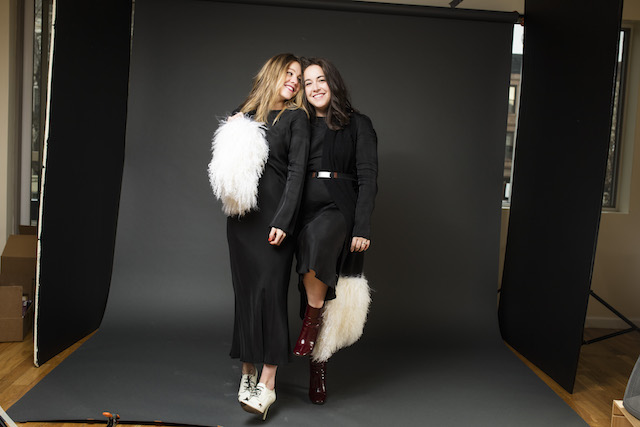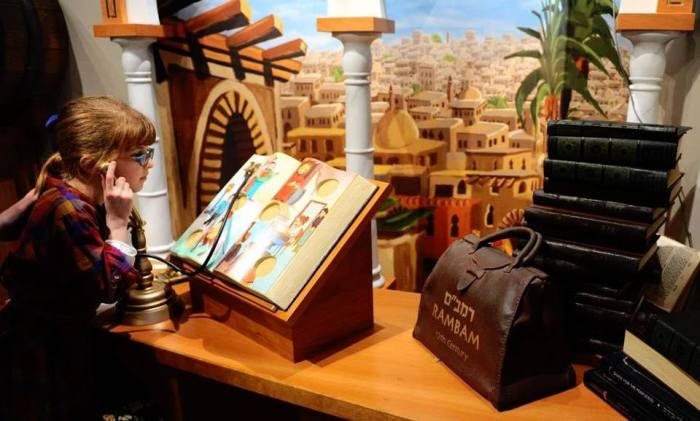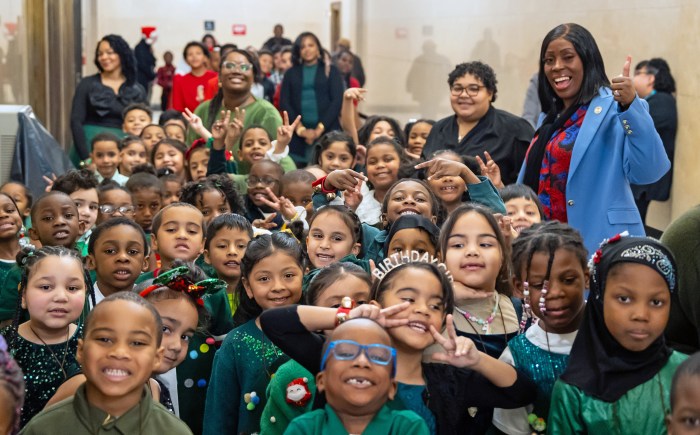On any given morning, countless women open up their overflowing closets and utter the words, “I have absolutely nothing to wear to work today.”
When sisters Simi Polonsky and Chaya Chanin launched The Frock NYCin 2010, they wanted to remedy this wardrobe woe, and prove that putting together a practical, stylish outfit isn’t an impossible task. But the sisters had an additional sartorialchallenge: to ensure their pieces were in alignment with the standards of modesty in their Orthodox Jewish faith. RELATED: Fashion forward: how one designer found creativity in business
Australian natives, the sisters had long drawn style inspiration from the relaxed and whimsical Aussie beach culture. But it was only after moving to New York, however, that their love of fashion took on a new, more defined shape. One of their favorite pastimes — sleuthing through thrift stores and seeking sartorial gems — evolved from a hobby into business idea. They loved tinkering with their thrift shop finds, adding sleeves or letting down hems to make pieces more modest — and, after styling other modestly dressed women, they realized others appreciated the same attention to detail. Thus their line of Frock basics was born: soft, drapey and versatile dresses that are embraced not only by women who dress modestly, but also the fashion elite.
In the latest in our series on artist-entrepreneurs, we spoke to Polonsky and Chanin about balancing motherhood and business, how the constraints of dressing modestly influence their creativity, and why it’s foolish to think modesty andhigh fashion aremutually exclusive. Names:Simi Polonsky and Chaya Chanin
Business: The Frock Studio, which includes original designs of modest wardrobe essentials (The Frock Basics) a pop up consignment store (The Frock Swap) and styling services (The FrockStyle) Creative Endeavor: Fashion design
RELATED: Why artists need to be entrepreneurs
Entrepreneurs tend to see a niche and fill it. How did you discover there was a need for the type of wardrobe pieces youcreated?
You’d think in New York, where you can get anything and everything for the average woman who wants to dress modestly, finding clothes wouldn’t be a problem, but easy [wardrobe] pieces were hard to find. We started saying we need this, we need that, we need a slip dress with sleeves. We’d fix things and we’d make them work, but it took a lot of effort. The rise of modest women looking for fashion is exciting. It’s not really Jewish women only, there’s a huge rise in Muslim women saying we’re sophisticated, we’re educated and we’re stylish. Your signature pieces are really unique. What was one fashion problem you came up against, and how did you get unstuck?
[As stylists] we would be in the closets of so many people. We’d sayyou need this type of dress, and they would look at me and be like, but where do you actually get it?Sometime we could find it, but it wouldn’t be nice enough, or it would be like $90 dollars for a T-shirt. When we first started out, when our business started to actualize, it was with what we created called The Signature Slip. What are some of your other favorite wardrobe pieces?
We want to create items that women can look stylish or different in, or they put on their own twist on. One of the pieces we invented, we took leather roping, and we dubbed it the Frock seat belt. We realized that all women always need something to gather in the waist. Did you feel creatively constrained by the restrictions of modesty?
You have to be way more creative to put together a regular outfit. [If you don’t dress modestly] you could put jeans with a great funky sweater, but as soon as you have to wear a skirt or a dress, you have to be a little more dressed up. You can make it cool and work, but so many women take for granted that they can go into a Forever 21 store. How do you balance the business side with your creativity?
I find that when working in a creative field, I incorporate my personal style and aesthetic, with the style, lifestyle and personality of the end consumer. When designing our collection, we try to strike the delicate balance of infusing our (often eccentric and ‘out of the box’) flair and personality, to meets the needs and wants of any women. Who do you look to for inspiration?
I loved nothing more than Grace Coddington, and what she puts together for Vogue was always so inspiring and amazing. I loved how the clothing would become part of the story.Now, I spend most of my time looking at street style. How do you unwind?
The fact that we have Shabbat [the Jewish Sabbath] is a huge blessing. I guess we wouldn’t be able to recharge [otherwise].
You both have small children. How do you balance having a family with running a business? One of our biggest challenges is balancing our mom/work roles. Juggling the many hats of being a mom and a business owner is a real struggle. Both are like our babies, and both need our full attention to grow. There never seems to be enough hours in the day to get through what we envisioned we want to, or need to get through, work and family. The balancing act is a constant work in progress. Being aware and taking the time to be proud of our accomplishments, counting our blessing of being able to “have both” as challenging as it can be and accepting that we are not aiming for perfection on both fronts puts us in a better and more positive head space, and we end up being more productive at work, and being better moms every day. When do you feel most creative?
The creativity comes when you’re not involved in the emails and you’re not involved in the entrepreneurialspace.I’ll always think of ideas on Shabbat, I’m like holding myself in, and then as soon as its over I’ll call my sister. So where do you see yourself years down the line?
When we’re 80 and retired, we’re going to share an art studio and paint.
For Orthodox fashionistas, style constraints breed creativity

Provided

























